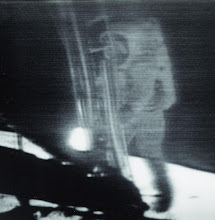

Friends Kim and David keep a fine blog called
RESCRIPTED , their term for what happens to interesting objects that are adapted, repurposed and given new life. I came across something that has been literally rescripted, and since this blog is partly about evidence, here's some evidence for you.
The object at hand is a tattered ship's log book of the Brig Fredonia, dated 1863. The pages have columns and lines for entries of Knots, Winds, Course and Remarks, all dutifully noted by the ship's master, Isaac Lord, in that lovely sepia ink of the period. The ship's journeys included Constantinople, Palermo, Boston, Philadelphia, Cardenas de Cuba and other ports. The pages are full of fine terms like "fresh breezes" "light airs" and ominous "sharp lightning" and "heavy gales." In Italy they take on hundreds and hundreds of boxes of lemons and oranges. That fragrance carries across a century.
Here's where the plot thickens and the object changes into something else entirely. At some point, the log book came into the possession of a young girl, and for several years she used it as a scrapbook for clippings and a place where she entered her thoughts, in pencil, directly over the earlier writing. A few notes show that she's making her entries between 1870 and 1874, and that she's in school, probably in Wakefield, Mass. Now I'll let her speak for herself.
"The women are not aliens; they are not children, they are not ignorant; they are not lunatics, felons or fools...Their minds are not
inferior; they are on an equal, if not
superior."
and
"Indeed there are never any differences between
man and wife wives and husbands, the husband has only to take his snuff and the wife sneezes."
and
"I do not want to vote; I do not mean to vote, but I hold that woman's mind is capable of voting, and of knowing what she is voting for."
Now that's a history book.




























